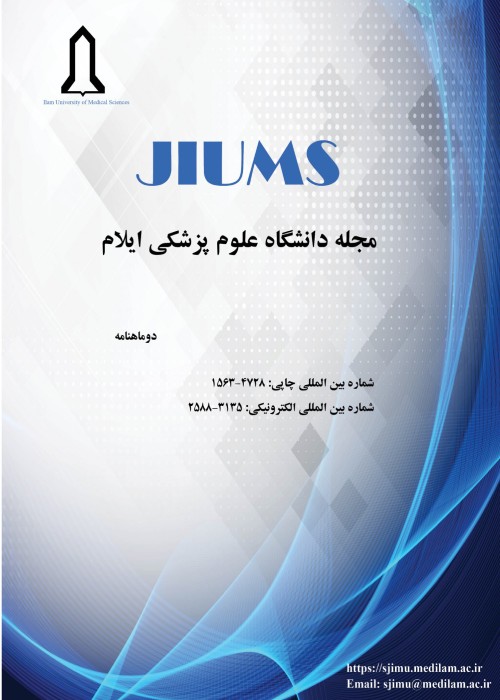Study of the Persistence Effect of two Exercises Controlling the Scapula and Corrective Movements on Neck Pain and Angle of Head in Males with forward Head
Author(s):
Article Type:
Research/Original Article (دارای رتبه معتبر)
Abstract:
Introduction
The scapula movement control disorder is an important factor in the incidence of upper limb abnormalities that influences sensory-motor control. There is a dearth of research on the persistence effects of training exercises. Therefore, the aim of this study was to investigate the persistence effects (after six months) of two exercises controlling the scapula and corrective movements on neck pain and angle of head among males with forward head.
Materials & Methods
In total, 20 males with forward head disorder who referred to Science and Movement Center in Ilam were selected in this city. The patients were randomly divided into experimental (n=10, age=35.13±3.12, height=177±1.12, weight=63.10±3.28) and control (n=10, age=36.11±1.75, height=179±1.64, weight=62.12±4.12) groups. The experimental group was subjected to exercise training program three times a week for eight weeks. The program included exercises controlling the movements of the scapula with the emphasis on the maintenance of correct posture, prevention of compensatory motor patterns and providing motion feedback to improve the coordination of the shoulder joint with the shoulder belt assembly. The control group performed their normal corrective exercises focusing on strengthening weakened muscles and stretching shortened muscles. Side scapular movements, neck pain, and forward head angles were measured using side scapular movement test, visual analog scale, and digital goniometer before and after the treatment. Moreover, pre-training tests were repeated after six months. Data analysis was performed using repeated measure variance.
Findings
The results showed that the effects of training after six months on the neck pain and the angle of forward head variables were more significant in the scapula control training group, compared to the corrective exercise group (P =0.001). Moreover, the results indicated that controlling scapula movement training can reduce side scapular movements (0-degree, P=0.01, 45-degree P=0.01, 90-degree P=0.012), neck pain (P=0.018) and the angle of forward head (P=0.019).
Discussion & Conclusions
Due to the better persistence effects of exercise controlling the scapula movements, this method can be used to reduce neck pain and angle of forward head in people with forward head complications.Keywords:
Language:
Persian
Published:
Ilam University of Medical Science, Volume:27 Issue: 1, 2019
Pages:
148 to 160
magiran.com/p1974108
دانلود و مطالعه متن این مقاله با یکی از روشهای زیر امکان پذیر است:
اشتراک شخصی
با عضویت و پرداخت آنلاین حق اشتراک یکساله به مبلغ 1,390,000ريال میتوانید 70 عنوان مطلب دانلود کنید!
اشتراک سازمانی
به کتابخانه دانشگاه یا محل کار خود پیشنهاد کنید تا اشتراک سازمانی این پایگاه را برای دسترسی نامحدود همه کاربران به متن مطالب تهیه نمایند!
توجه!
- حق عضویت دریافتی صرف حمایت از نشریات عضو و نگهداری، تکمیل و توسعه مگیران میشود.
- پرداخت حق اشتراک و دانلود مقالات اجازه بازنشر آن در سایر رسانههای چاپی و دیجیتال را به کاربر نمیدهد.
دسترسی سراسری کاربران دانشگاه پیام نور!
اعضای هیئت علمی و دانشجویان دانشگاه پیام نور در سراسر کشور، در صورت ثبت نام با ایمیل دانشگاهی، تا پایان فروردین ماه 1403 به مقالات سایت دسترسی خواهند داشت!
In order to view content subscription is required
Personal subscription
Subscribe magiran.com for 70 € euros via PayPal and download 70 articles during a year.
Organization subscription
Please contact us to subscribe your university or library for unlimited access!




